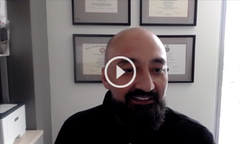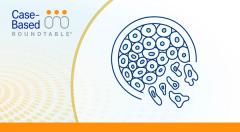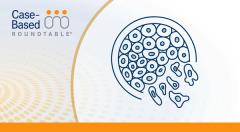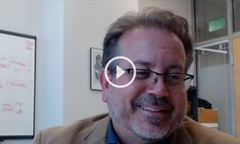
Ide-Cel Shows Benefit for Multiple Myeloma After 2 to 4 Lines of Therapy
Abdullah M. Khan, MBBS, discusses the pivotal phase 3 KarMMa-3 trial of idecabtagene vicleucel in patients with relapsed/refractory multiple myeloma.
Episodes in this series

Abdullah M. Khan, MBBS, assistant professor in the division of hematology at The Ohio State University Comprehensive Cancer Center, discusses the pivotal phase 3 KarMMa-3 trial (NCT03651128) of idecabtagene vicleucel (ide-cel; Abecma) in patients with relapsed/refractory multiple myeloma.
The trial randomly assigned 386 patients on a 2:1 basis to receive the chimeric antigen receptor (CAR) T-cell therapy or 1 of 5 standard regimens. They had received between 2 and 4 prior lines of therapy for multiple myeloma, with a median of 3. The primary end point was progression-free survival (PFS).
Of these patients, 254 were assigned to the ide-cel group, with 225 receiving ide-cel. Three were unable to receive ide-cel due to manufacturing failure. There were 132 patients who received standard therapies.
In the initial publication in 2023, there was a median follow-up of 18.6 months. The median PFS with ide-cel was 13.3 months compared with 4.4 months for those receiving standard therapy [HR, 0.49; 95% CI, 0.38-0.65; P < .001]. In the ide-cel group, 181 of 254 patients had a response (71%) vs 42% in the standard therapy group, and 39% had a complete response (CR) or stringent complete response (sCR) with ide-cel compared with 5% with standard therapy.
TRANSCRIPTION:
0:08 | They were randomized 2:1 to receive ide-cel vs a standard regimen. It was not dealer's choice; you were given 5 options. Those 5 options included things like daratumumab [Darzalex], pomalidomide [Pomalyst], dexamethasone; elotuzumab [Empliciti], pomalidomide, dexamethasone; carfilzomib [and] dexamethasone; ixazomib [Ninlaro], lenalidomide [Revlimid], dexamethasone; and daratumumab, bortezomib [Velcade], dexamethasone; so good treatment options. What they were looking for is a difference—the primary end point was PFS. Two hundred and fifty-four patients were in the ide-cel group, of which 225 got the CAR [T-cell] product, and 3 patients who were in that 254 were actually not able to get the product because of cell manufacturing failure. In the standard group, there was 132 patients. The median number of prior therapies was 3 within that range of 2 to 4.
1:10 | What they showed in the initial publication was [at] a median follow-up of 18.6 months, the median PFS was 13.3 months in the ide-cel group vs 4.4 months in the standard group. The HR for this was 0.49, which means that there was a 51% risk reduction in the risk of progression or death. The [overall] response rates were impressive with the ide-cel group: 71% vs 42% and deep responses as well; CR or sCR rates were 39% in the ide-cel group vs 5% in the standard group.













































